This article describes steps to allow or prevent apps from running in the background in Windows 11.
Windows allows you to manage background activity for apps. For example, you can determine what an app does when running in the background and not actively in use.
Apps running in the background can send and receive notifications, sync information, and stay up to date. If you do not want the app to run in the background, or if it uses a lot of battery when running in the background, you can change the settings for apps that allow it.
There are three states one can choose for apps that run in the background:
- Always. The app is always allowed to run in the background
- Power optimized (recommended). Windows will decide based on battery needs.
- Never. It won’t run in the background when you’re not actively using the app.
How to stop or allow apps to run in the background in Windows 11
As described above, Windows allows you to manage background activity for apps. You can determine what an app does when running in the background and not actively in use.
Below is how to change background app behavior in Windows 11.
Windows 11 has a centralized location for the majority of its settings. As a result, everything can be done, from system configurations to creating new users and updating Windows from its System Settings pane.
To get to System Settings, you can use the Windows key + I shortcut or click on Start ==> Settings, as shown in the image below:
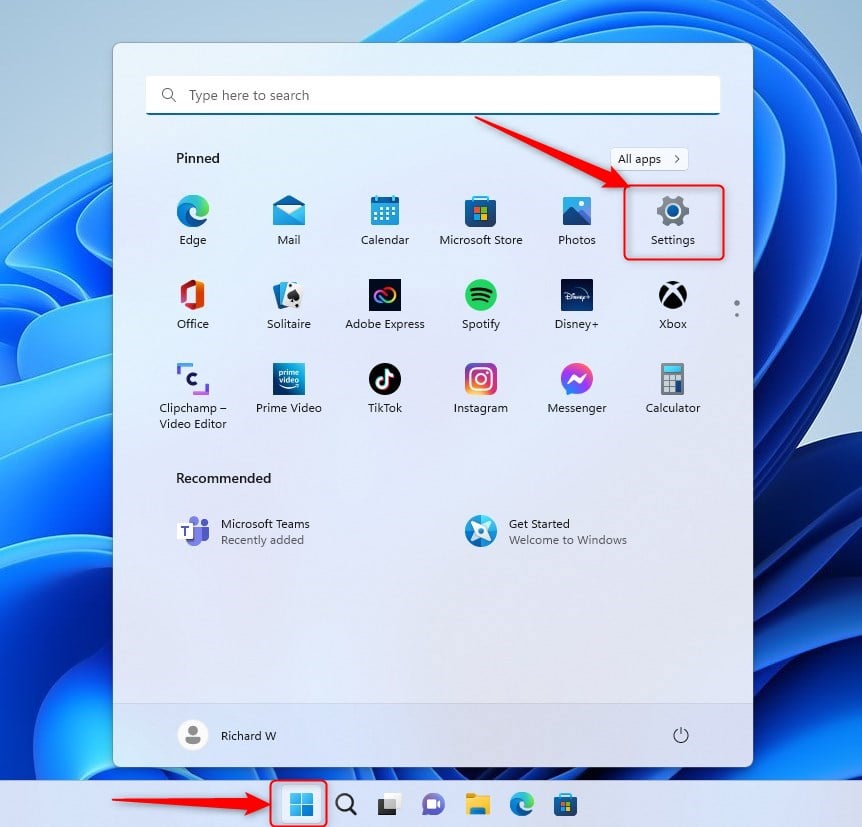
Alternatively, you can use the search box on the taskbar and search for Settings. Then select to open it.
Windows Settings pane should look similar to the image below. In the Windows Settings app, click Apps on the left.
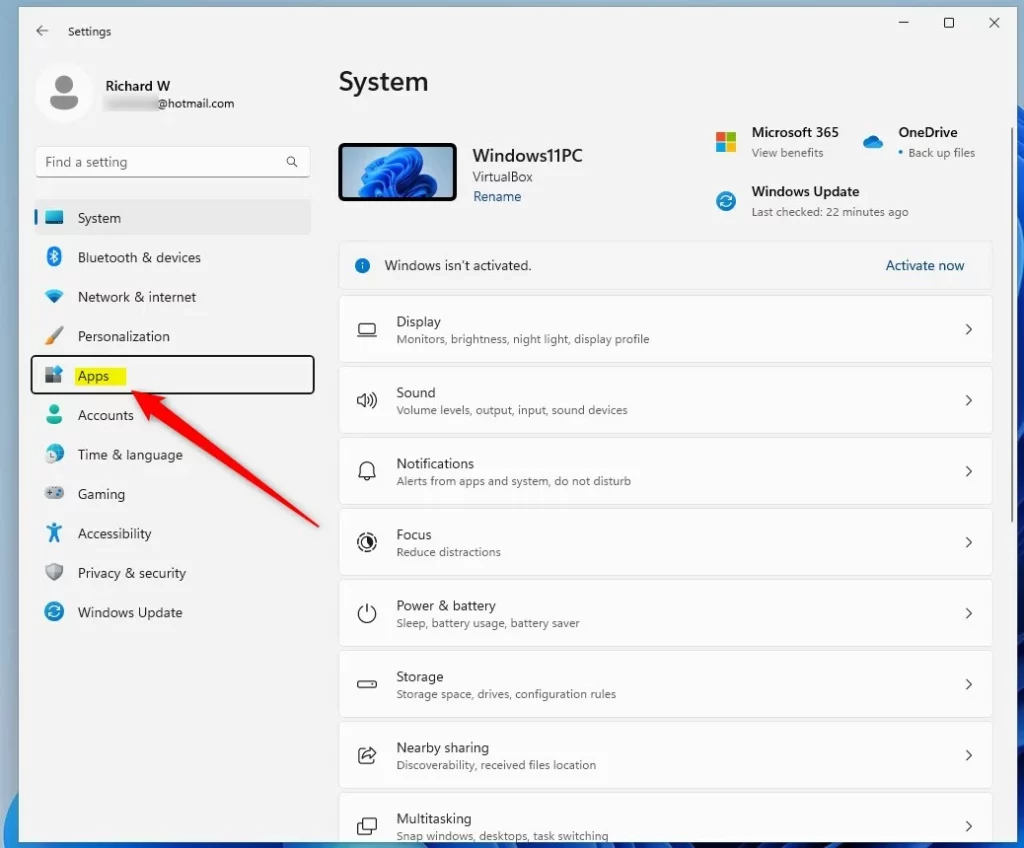
On the right, select the Installed app’s tile to expand.

On the System -> Apps -> Installed apps settings pane, click the menu (three-dotted) button for the Windows app you want to change its settings.
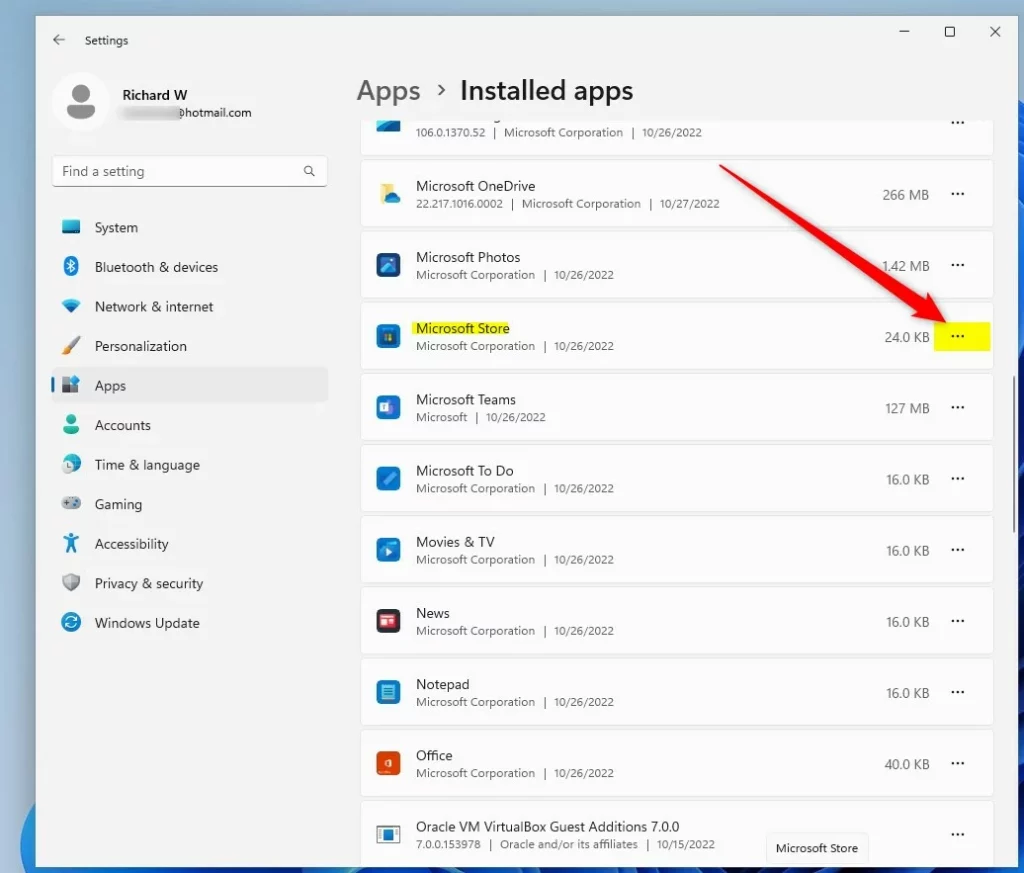
On the menu fly-out window, select Advanced options as highlighted below.
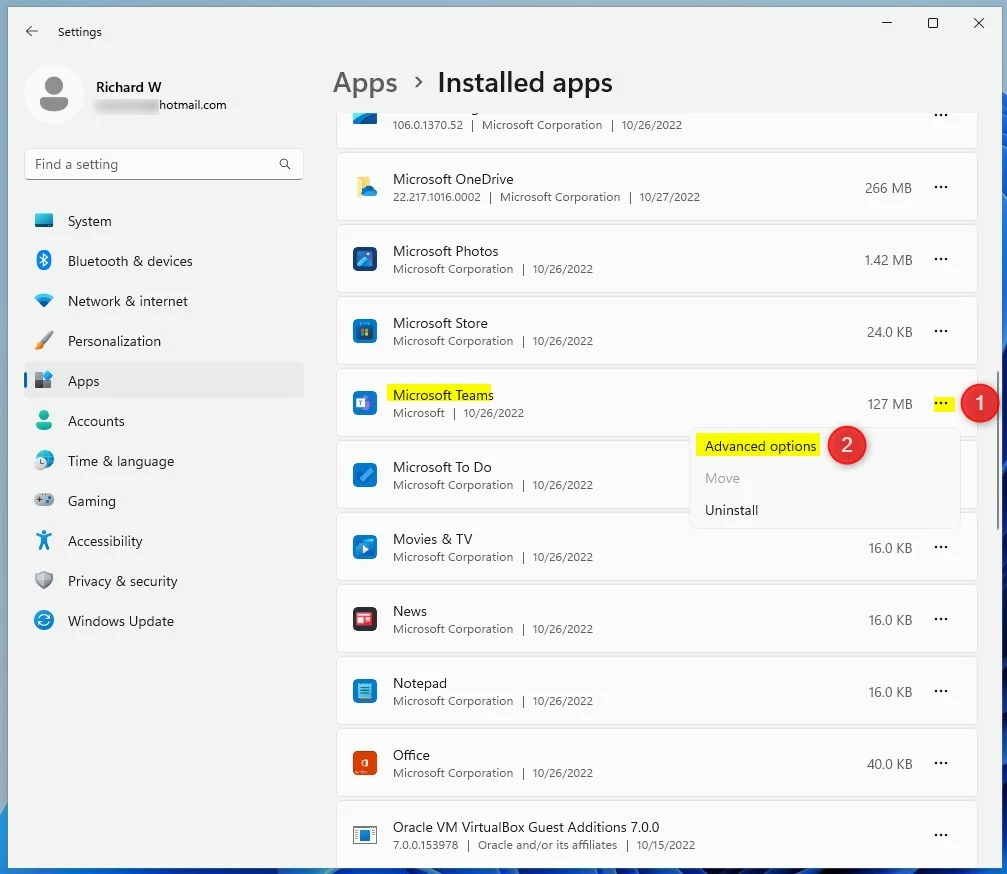
On the System -> Apps -> Installed apps -> App name, under Background apps permissions, choose what background action to allow for the specific app.
Always. The app is always allowed to run in the background
Power optimized (recommended). Windows will decide based on battery needs.
Never. When you’re not actively using the app, it won’t run in the background.
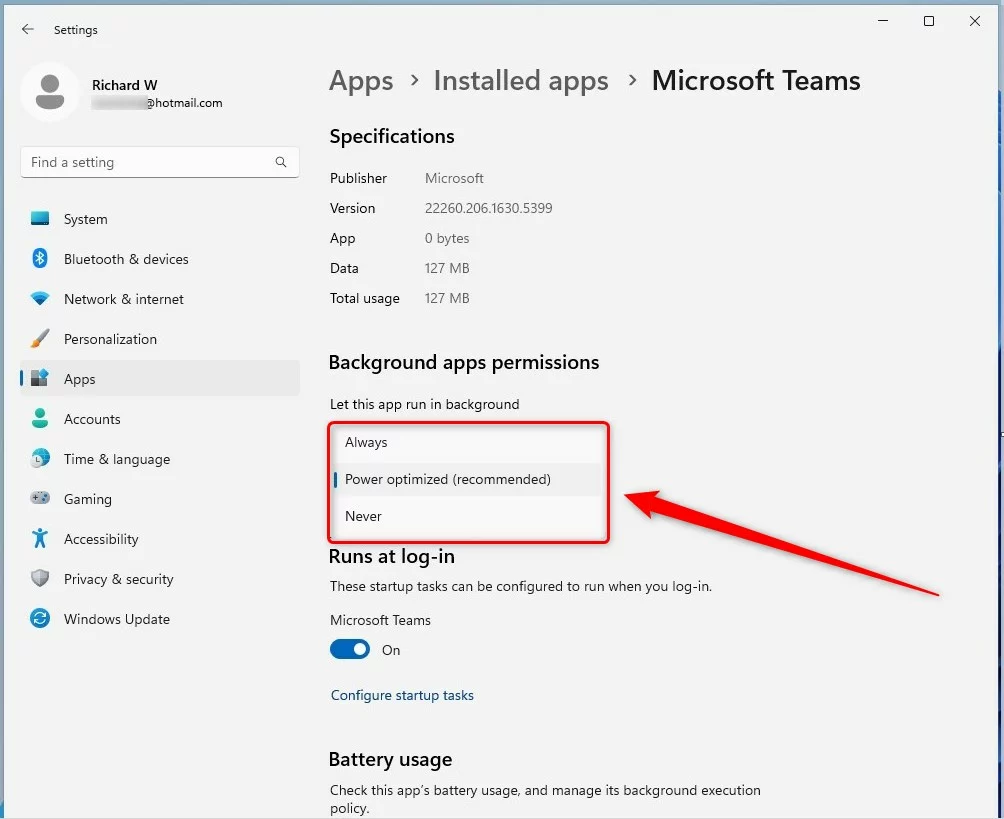
Whatever option you choose will apply to the selected app.
Note: If your device wants to stay connected and get app updates, you must set at least one app to Always.
That should do it!
Reference:
Conclusion:
- In conclusion, managing background apps in Windows 11 gives you control over app behavior when not in use.
- Following the steps outlined in this article, you can choose whether an app runs in the background based on your preferences and device needs.
- It’s important to note that setting at least one app to “Always” background activity may be necessary for certain essential device functions, such as staying connected and receiving app updates.
These guidelines empower users to optimize their device’s performance and battery usage by customizing background app permissions.

Leave a Reply Cancel reply